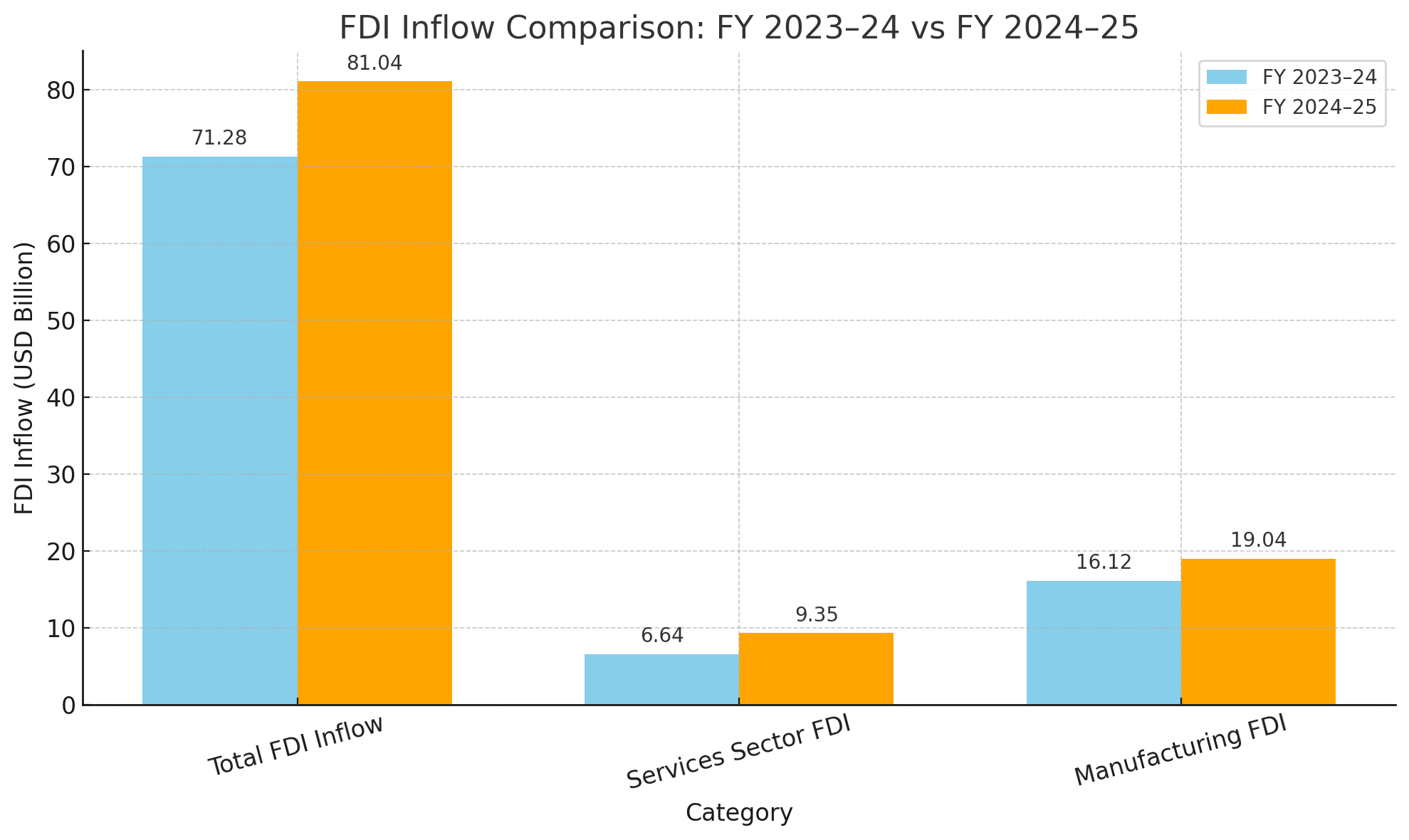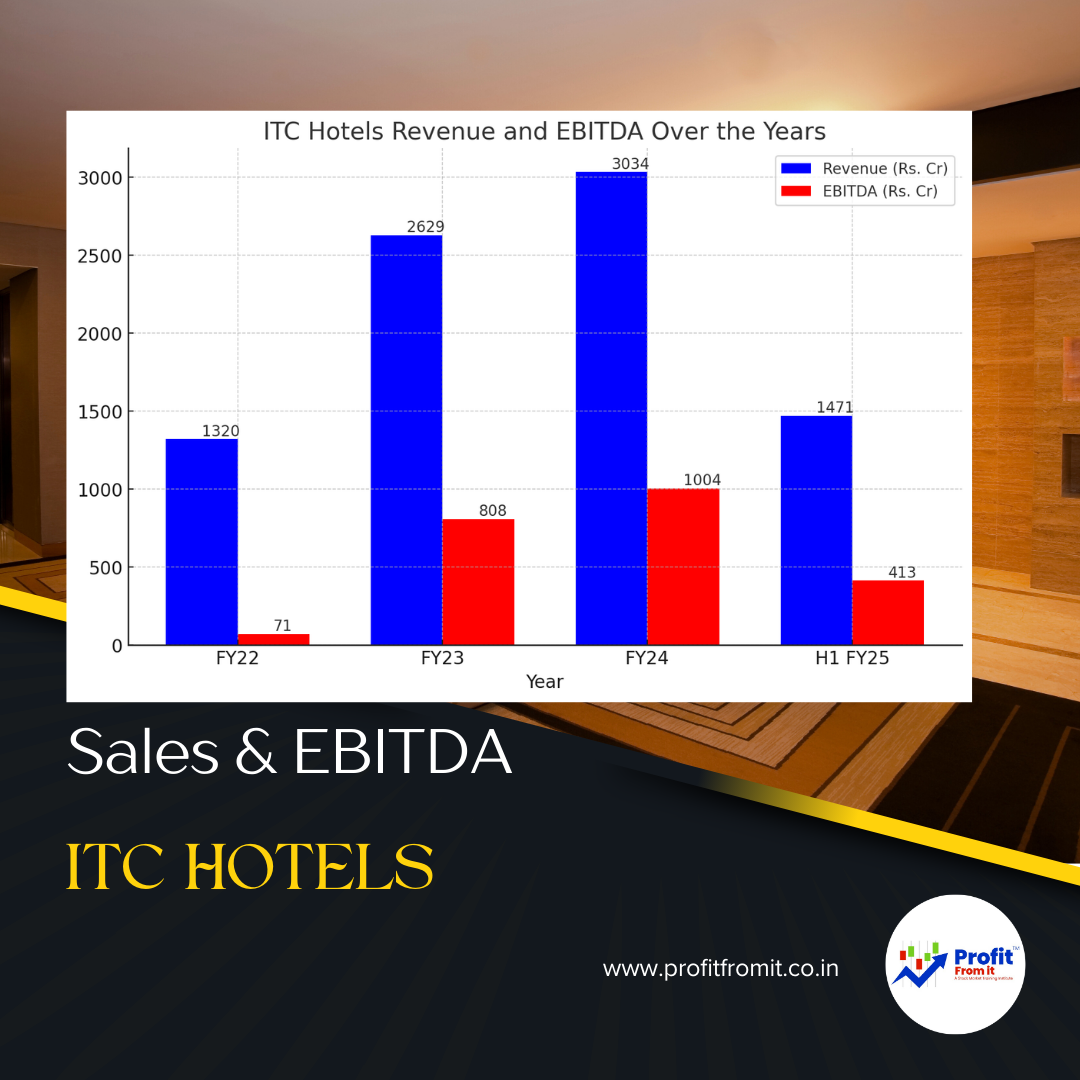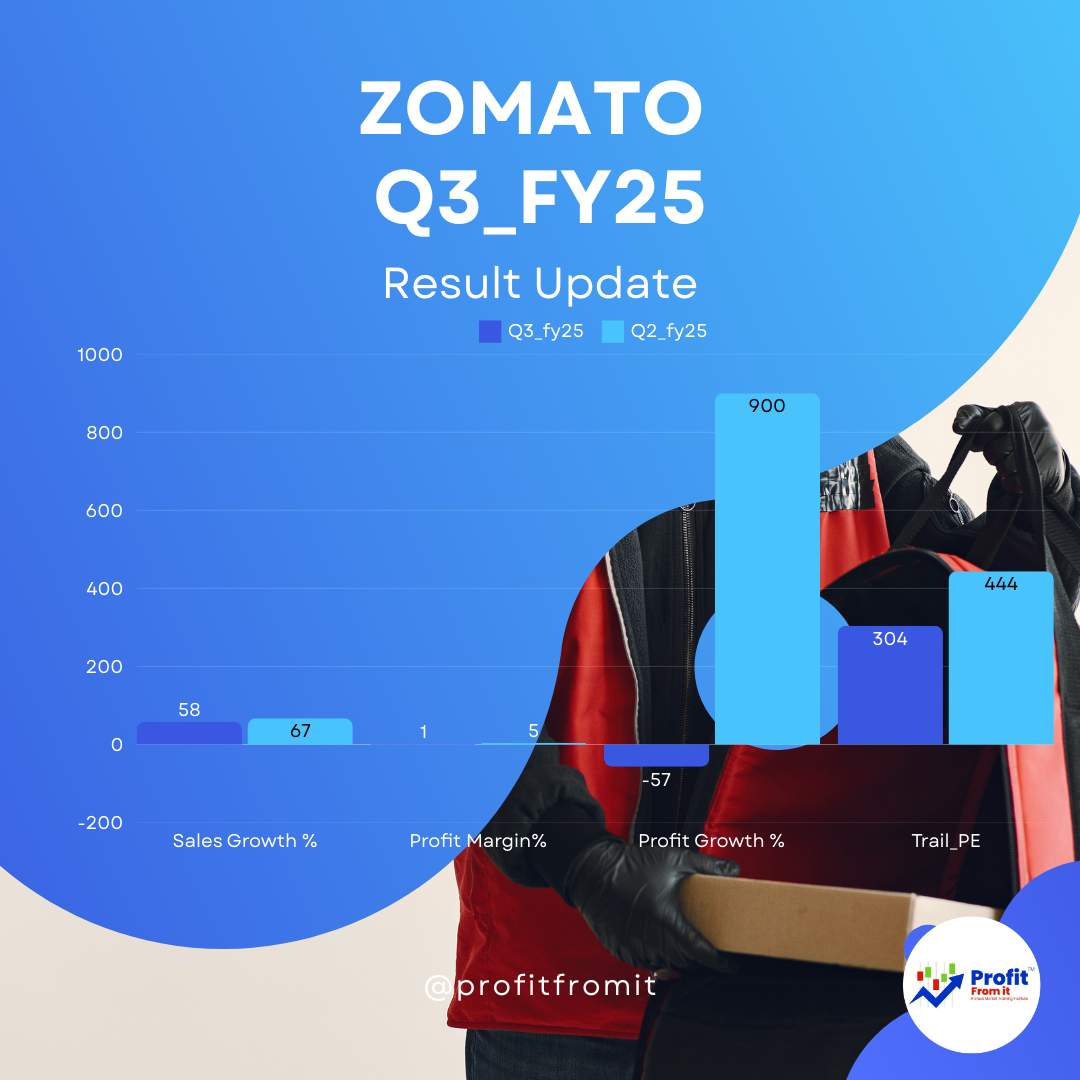
🇮🇳 India Hits Record FDI Inflow of USD 81.04 Billion in FY 2024–25 🚀
How This Impacts the Stock Market, Sectors & Key Companies
📅 Posted On: 27 May 2025
📰 Source: PIB | Ministry of Commerce & Industry | Azadi Ka Amrit Mahotsav
🔍 Overview:
India has once again proven its mettle as a top global investment destination. With FDI inflows touching a record USD 81.04 billion in FY 2024–25, the country has registered a 14% YoY growth, backed by a liberal FDI policy, robust reforms, and rising investor confidence.
This surge presents strategic investment insights for market participants, especially in high-growth sectors like services, IT, trading, and manufacturing.
📊 Key Highlights:
💸 Total FDI (FY25): $81.04 Billion (vs $71.28 Billion in FY24)
⬆️ Growth: 14% YoY
🏆 Top Sector: Services (19% share, $9.35B, up 40.77%)
💻 Next Sectors: Computer Software & Hardware (16%), Trading (8%)
🏭 Manufacturing FDI: $19.04B, up 18% YoY
🗺️ Top FDI Recipient States: Maharashtra (39%), Karnataka (13%), Delhi (12%)
🌍 Top Source Countries: Singapore (30%), Mauritius (17%), USA (11%)
🌐 Source Countries Expanded: 112 in FY25 vs 89 in FY14
📈 Sectoral Impact on Indian Stock Market:
🏦 1. Financial & Insurance Sector
FDI reforms in insurance and pension are fueling growth in listed insurers.
🔍 Watchlist Stocks:
HDFC Life, ICICI Prudential, SBI Life, Max Financial Services
💻 2. IT & Software
16% share in FDI equity inflows signals continued momentum.
🔍 Watchlist Stocks:
Infosys, TCS, Wipro, LTIMindtree, Tech Mahindra
🛒 3. Retail & E-commerce
FDI liberalization in single-brand retail has strengthened investor interest.
🔍 Watchlist Stocks:
Titan, Trent, Avenue Supermarts (DMart)
🛠️ 4. Manufacturing & Industrial Growth
Contract manufacturing and Make-in-India policies boosted FDI.
🔍 Watchlist Stocks:
Bharat Forge, Polycab, APL Apollo, L&T, Bosch
⚙️ 5. Defence & Infrastructure
FDI limit raised in defence and civil aviation aids capital flows into PSUs.
🔍 Watchlist Stocks:
BEL, HAL, Cochin Shipyard, BEML, Adani Ports
💼 Long-Term Investment Outlook:
🔹 The FDI rise signals confidence in India’s long-term economic growth.
🔹 India’s structural reforms across sectors are attracting long-term foreign capital, which usually flows into stable and growing listed companies.
🔹 Expect higher valuations and better growth visibility in top beneficiary sectors over the next 5–10 years.
📌 Strategic Investor Insights:
Prefer sector leaders and companies with strong FPI/FII holding.
Track policy changes in Budget and Ministry updates for early signals.
Look for capacity expansion plans and capex-led growth in listed companies post-FDI inflow announcements.



 for Investors The provided chart outlines key metrics for Nifty 500 companies across different periods (FY22 t.png)





